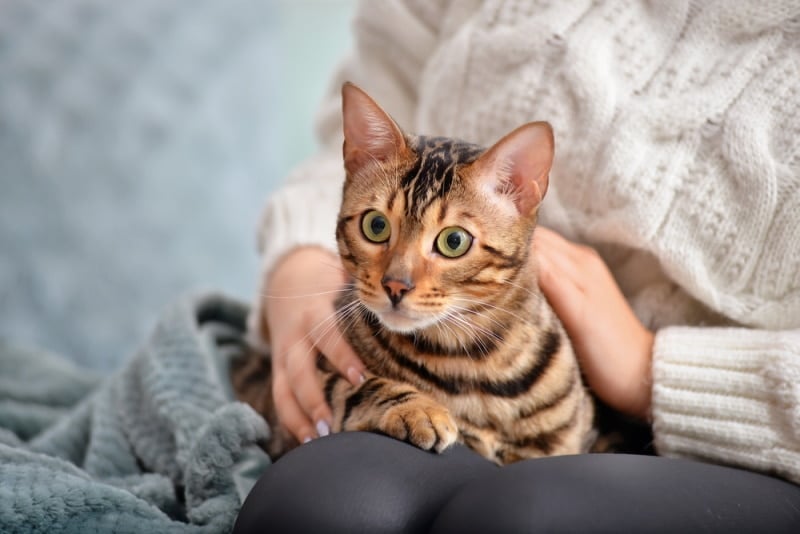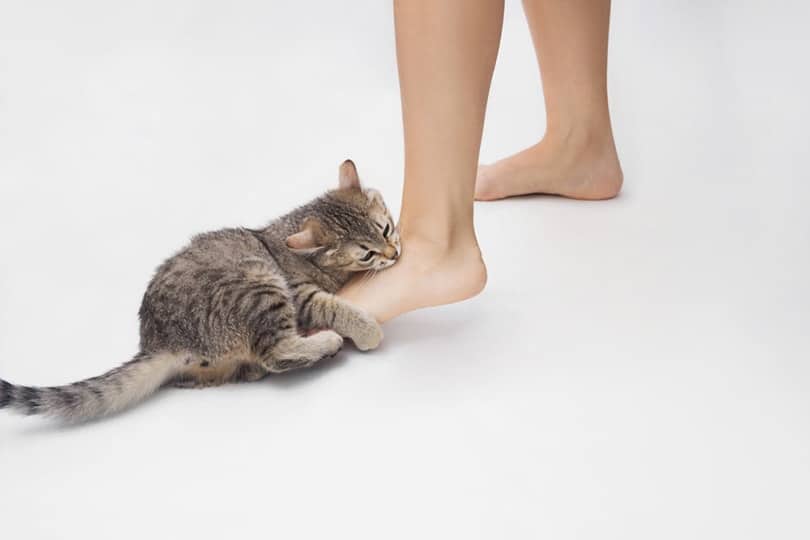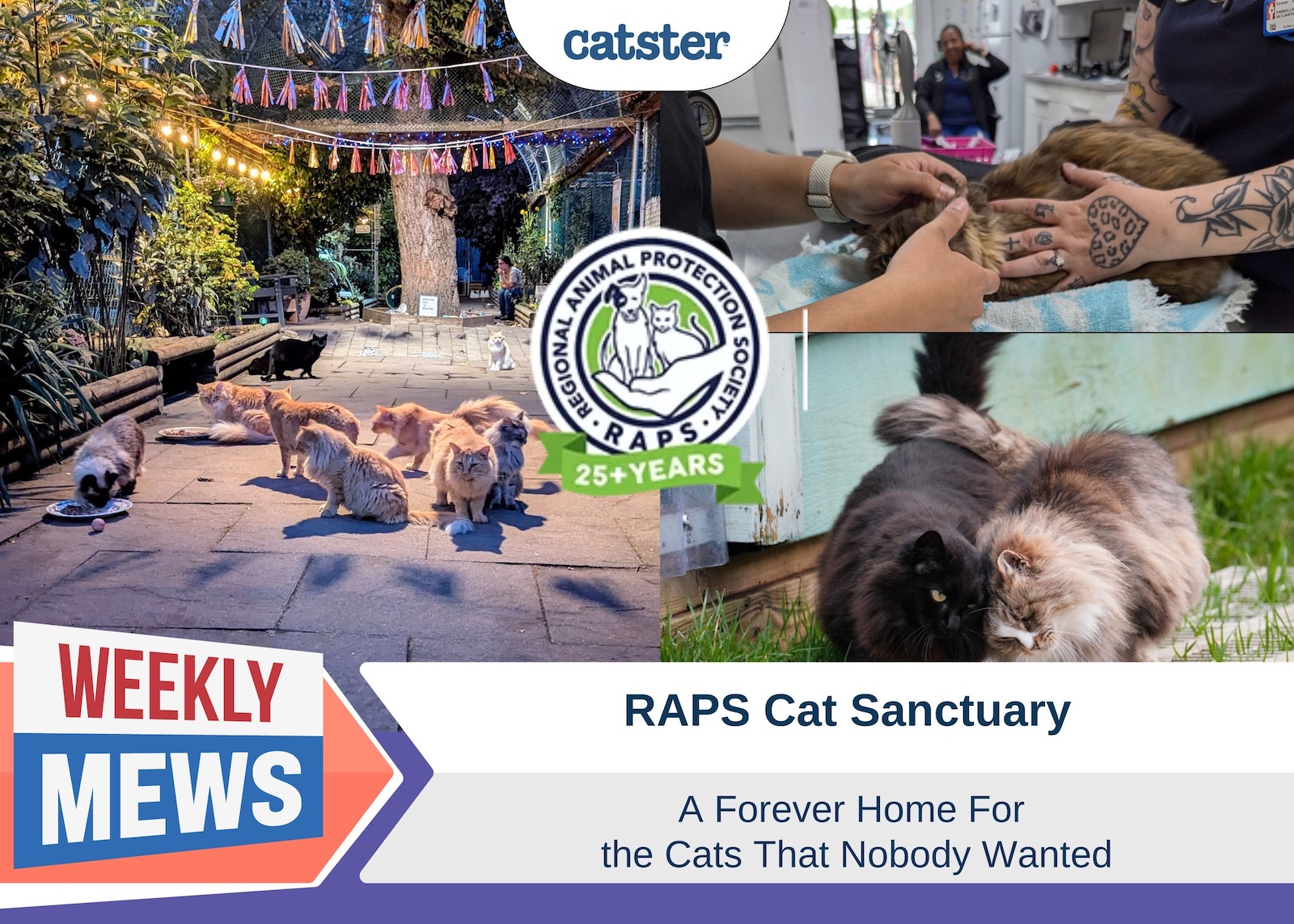Click to Skip Ahead
Cats are unique, fascinating creatures that have captured our hearts for generations. While some felines crave constant attention and physical touch, others are more reserved and only accept petting on their terms.
To ensure that your cat feels comfortable and enjoys your affection, it is essential to know the right spots to pet them. Here are the top five vet-approved locations on a cat’s body that most cats love to be petted.

The 5 Best Spots to Pet a Cat
1. Chin & Cheeks
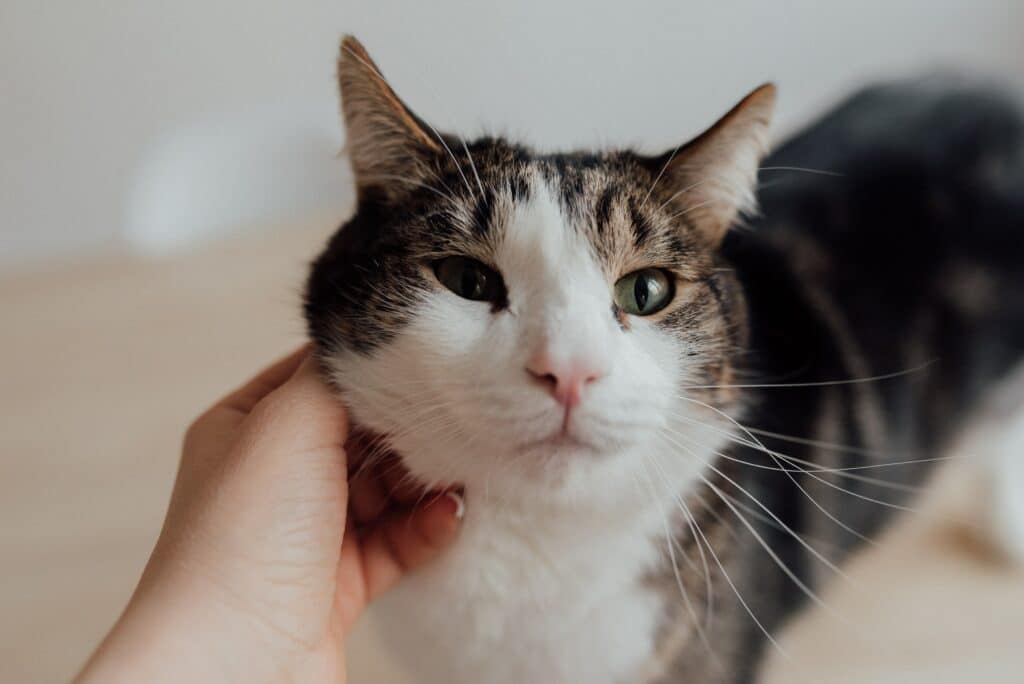
Cats have scent glands in their cheeks and chin that release pheromones when rubbed. Petting these areas can be soothing for your feline friend and can help them feel more comfortable and secure.
Gently stroke your cat’s cheeks and chin using your fingers, being mindful of their body language. If your cat leans into your touch or purrs, they are enjoying the experience. Be cautious not to press too hard or to rub their whiskers, as some cats may find this uncomfortable.
2. The Base of the Ears
The area at the base of a cat’s ears is another favorite spot for many felines. This region contains a high concentration of nerve endings, making it sensitive to touch. Gently rub the base of your cat’s ears with your fingertips, using a circular motion.
Be sure to watch for signs of relaxation, such as purring or closing their eyes. If your cat shows any signs of discomfort, like flattening their ears or attempting to move away, cease petting and give them some space.
3. The Top of the Head
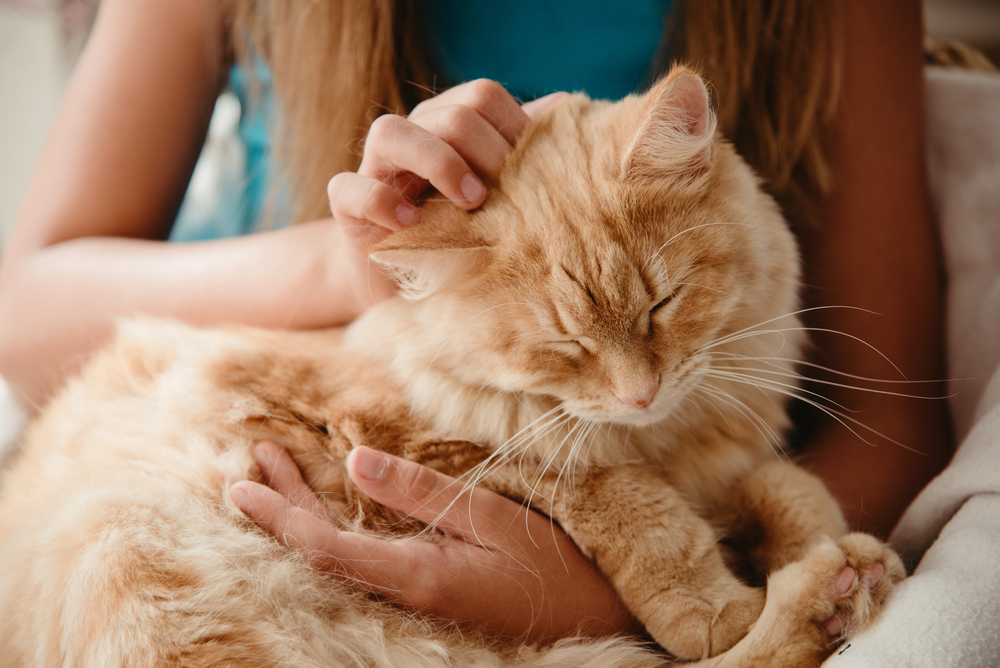
The top of a cat’s head, between the ears, is another spot that most cats love to be petted. This area is easily accessible and can be soothing for your cat. Gently stroke the top of your cat’s head using your fingers and be sure to avoid pressing down too hard.
As with the other spots, pay attention to your cat’s body language to ensure they are enjoying the experience. Purring, leaning into your touch, and closing their eyes are all signs that your cat is relaxed and comfortable.
4. Along the Back & Spine
Petting your cat along their spine can provide a pleasant sensation for them, as long as you avoid the base of the tail. Many cats enjoy having their back stroked from the top of their head to the middle of their back.
Use a flat hand to gently stroke your cat’s back, taking care not to press down too hard. Again, be mindful of your cat’s body language and adjust your petting style accordingly. If your cat arches their back or tries to move away, it’s best to stop and try another spot.
5. Chest & Shoulders
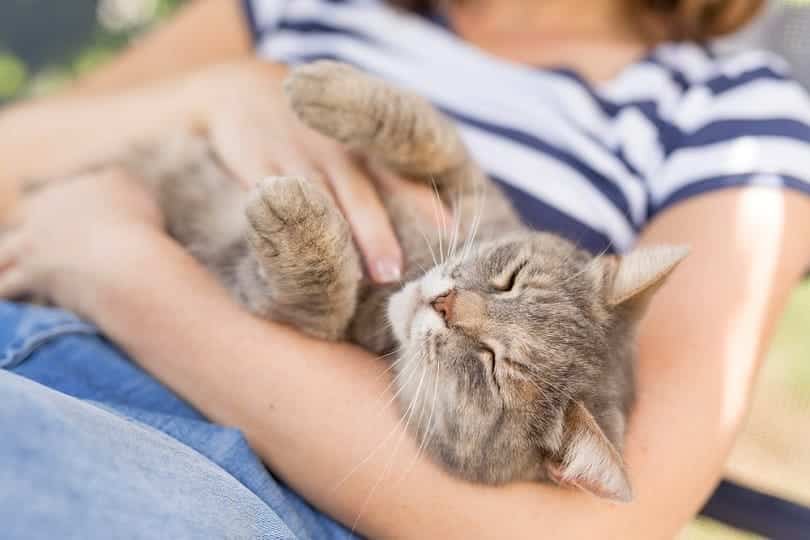
The chest and shoulder area can be a favorite spot for some cats, especially when they are feeling relaxed and comfortable. To pet your cat in this area, start by gently stroking the top of their head and then move down to their chest and shoulders.
Once again, use the flat of your hand with a gentle touch, being careful not to press too hard. Remember to watch for signs of enjoyment, such as purring or leaning into your hand. If your cat becomes tense or tries to move away, it’s best to stop and give them some space.

Tips to Make the Most of Petting Your Cat
The most important thing to remember when petting cats is to not force petting onto your cat. Instead, let your cat feel comfortable with your presence, and gauge their interest in a petting or cuddling session. Cats prioritize territory over social interaction with their owners, and abruptly invading your cat’s personal space to pet them might be met with a disgruntled feline or in some cases a swipe of the paw.
However, once you and your cat have a petting protocol in place, you can slowly test your cat’s tolerance to being petted in other places. Generally speaking though, you should avoid petting your cat on or in between their paws and their genitals.
If your cat is cuddly and enjoys your petting sessions, utilize the session to the best by gently running your hand through your cat’s fur to spot for anything out of the ordinary. Small, salt or pepper like flakes might be a sign of fleas. Red, flaky, or a patch of skin that’s exceptionally warm to the touch could hint at a problem. Matted fur may also hint at some potential problems; these are most commonly found around the neck or armpits. Matted fur can be painful, and it’s best to schedule a session with a groomer to help remove the mats.
Pay close attention to your cat’s reaction while you gently stroke their limbs. A sudden turn of the head, a slight shift, or a change of demeanor might indicate pain in the bone or joint you’re petting. Take note of this and bring it to your vet’s attention to check your cat for any potential issues.
If you need to speak with a vet but can't get to one, head over to PangoVet. It's an online service where you can talk to a vet online and get the advice you need for your pet — all at an affordable price!
If you notice patches of skin with thinning or no fur at all, you should also have this looked at by your vet. Note that cats naturally have thin or no fur on the tips of their ear or in the area between the ear and eyes. If your cat is very comfortable with your petting sessions, you may look into ways to massage your cat. Not only can this help with pain control, but it is also a fantastic way to bond with your feline!

Conclusion
It’s essential to pay close attention to your cat’s body language and preferences when petting them. By focusing on these vet-approved spots, you can ensure that your cat feels comfortable, loved, and appreciated.
Always remember that each cat is unique, and their preferences may change over time. So be patient and attentive to their needs, and you’ll create a strong, loving bond with your feline friend.
- See also: Why Do Cats Like To Be Pet While Eating
Featured Image Credit: Pixel-Shot, Shutterstock

